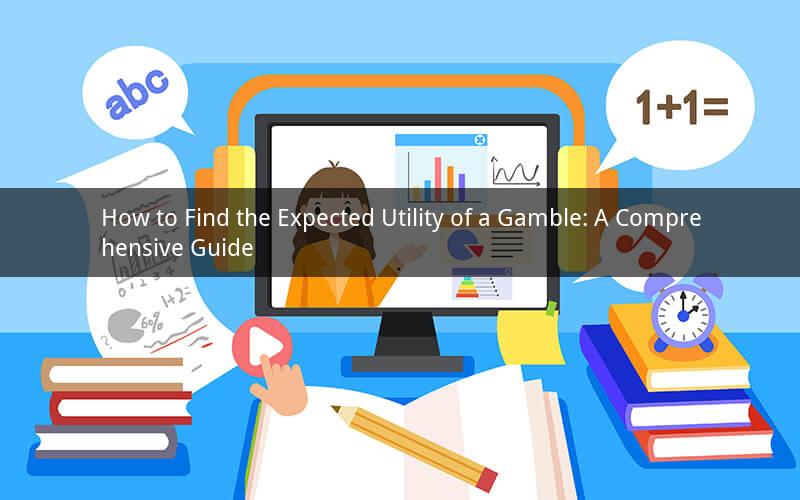
The concept of expected utility is fundamental in decision-making under uncertainty. In the realm of gambling, it serves as a critical tool to assess the desirability of different options. This guide aims to provide a comprehensive understanding of how to calculate the expected utility of a gamble. By the end of this article, readers will be equipped with the knowledge to make informed decisions based on their risk preferences.
I. Introduction to Expected Utility
Expected utility is a mathematical concept that measures the desirability of a gamble by combining the probability of different outcomes with their associated utilities. The utility of an outcome reflects the value that an individual assigns to it, taking into account their preferences and risk aversion.
II. Components of Expected Utility
To calculate the expected utility of a gamble, we need to consider the following components:
A. Outcomes: List all possible outcomes of the gamble.
B. Probabilities: Assign a probability to each outcome based on your assessment of the likelihood of its occurrence.
C. Utilities: Determine the utility of each outcome by evaluating its desirability.
III. Calculating Expected Utility
The expected utility of a gamble can be calculated using the following formula:
Expected Utility = Σ (Probability of Outcome i × Utility of Outcome i)
where Σ represents the sum of the products of probabilities and utilities for all outcomes.
A. Identify Outcomes: Start by listing all possible outcomes of the gamble. For example, consider a simple coin flip with two possible outcomes: heads (H) or tails (T).
B. Assign Probabilities: Determine the probability of each outcome. In the case of a fair coin flip, both heads and tails have an equal probability of 0.5.
C. Determine Utilities: Assign a utility to each outcome based on your preferences. For example, if you value a heads outcome more than a tails outcome, you might assign a higher utility to heads. Let's say you assign a utility of 2 to heads and a utility of 1 to tails.
D. Calculate Expected Utility: Using the formula mentioned earlier, calculate the expected utility:
Expected Utility = (0.5 × 2) + (0.5 × 1) = 1 + 0.5 = 1.5
This means that the expected utility of the coin flip gamble is 1.5.
IV. Adjusting for Risk Aversion
In real-world scenarios, individuals often exhibit risk aversion, meaning they prefer less risky options with similar expected utilities. To account for risk aversion, we can use the concept of risk premium. The risk premium is the additional utility an individual requires to accept a risky option over a certain safe option.
A. Determine Risk Aversion: Assess your risk aversion level. Some individuals are highly risk-averse, while others are risk-tolerant.
B. Adjust Utility: Adjust the utilities of outcomes based on your risk aversion. Risk-averse individuals will assign lower utilities to risky outcomes, while risk-tolerant individuals may assign higher utilities.
C. Calculate Adjusted Expected Utility: Using the adjusted utilities, recalculate the expected utility of the gamble.
V. Conclusion
In conclusion, finding the expected utility of a gamble involves identifying outcomes, assigning probabilities, determining utilities, and calculating the expected utility using the provided formula. By considering risk aversion, individuals can adjust their preferences and make more informed decisions. By following this comprehensive guide, readers will be equipped to evaluate the desirability of different gambling options and make choices that align with their risk preferences.
Questions:
1. How do you assign probabilities to outcomes in a gamble?
2. Can expected utility be negative?
3. How can you incorporate risk aversion into the expected utility calculation?
4. Can expected utility be used to compare different gambling options?
5. Are there any limitations to using expected utility in decision-making under uncertainty?